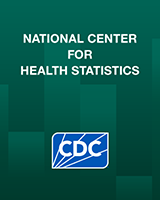
NCBI Bookshelf. A service of the National Library of Medicine, National Institutes of Health.
Percentage of teenagers ages 12–17 years who always or usually received the social and emotional support they needed, by selected characteristics and reporter: United States, July 2021–December 2022
| Characteristic | Teen estimate | Parent estimate | Prevalence ratio |
|---|---|---|---|
| Percent (standard error) | |||
| Total | 58.5 (1.76) | 93.1 (0.45) | 1.59 |
| Sex | |||
| Boys | 64.8 (2.49) | 93.0 (0.64) | 1.44 |
| Girls | 52.0 (2.59) | 93.3 (0.62) | 1.79 |
| Age group (years) | |||
| 12–14 | 61.0 (2.64) | 94.2 (0.57) | 1.54 |
| 15–17 | 56.0 (2.57) | 92.1 (0.67) | 1.64 |
| Race and Hispanic origin | |||
| Asian, non-Hispanic | 60.8 (5.74) | 85.1 (2.18) | 1.40 |
| Black, non-Hispanic | 42.3 (5.97) | 95.9 (1.01) | 2.27 |
| White, non-Hispanic | 66.3 (2.27) | 95.1 (0.54) | 1.43 |
| Hispanic1 | 49.6 (3.86) | 89.0 (1.13) | 1.79 |
| Sexual or gender minority2 | |||
| Yes | 43.9 (3.43) | 92.7 (1.81) | 2.11 |
| No | 63.5 (2.15) | 93.8 (1.07) | 1.48 |
| Family income as a percentage of federal poverty level3 | |||
| Less than 200% | 49.8 (3.61) | 90.2 (0.99) | 1.81 |
| 200% to less than 400% | 63.0 (3.22) | 94.9 (0.67) | 1.51 |
| 400% or more | 63.5 (2.64) | 94.7 (0.57) | 1.49 |
| Highest parental education level | |||
| High school or less | 51.9 (4.14) | 88.5 (1.13) | 1.71 |
| Some college | 52.6 (3.81) | 95.2 (0.80) | 1.81 |
| College degree or higher | 65.7 (2.27) | 94.7 (0.54) | 1.44 |
| Urbanization level | |||
| Large central or fringe metropolitan | 58.6 (2.36) | 91.4 (0.66) | 1.56 |
| Medium or small metropolitan | 57.3 (3.00) | 95.4 (0.66) | 1.66 |
| Nonmetropolitan | 60.9 (5.67) | 95.6 (0.89) | 1.57 |
| Region | |||
| Northeast | 63.2 (4.99) | 93.1 (1.17) | 1.47 |
| Midwest | 61.5 (3.74) | 95.0 (0.74) | 1.54 |
| South | 56.4 (2.87) | 92.4 (0.80) | 1.64 |
| West | 56.2 (3.16) | 92.9 (0.85) | 1.65 |
Teenagers of Hispanic origin may be of any race.
Because sexual or gender minority status is answered by the teenager, parent-reported estimates are limited to those for teenagers who completed NHIS–Teen. All other parent estimates come from the full sample of children ages 12–17 years from the 2021 and 2022 NHIS Sample Child interviews.
Calculated using U.S. Census Bureau poverty thresholds for the previous calendar year, which consider family size and number of children.
NOTE: Estimates are based on household interviews of a sample of the U.S. civilian noninstitutionalized population.
SOURCE: National Center for Health Statistics, National Health Interview Survey–Teen and National Health Interview Survey, July 2021–December 2022.

NCBI Bookshelf. A service of the National Library of Medicine, National Institutes of Health.